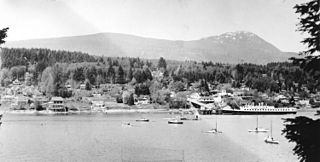
HMS Saltash (J62) was a Hunt-class minesweeper of the Aberdare sub-class built for the Royal Navy during World War I. She was not finished in time to participate in the First World War and survived the Second World War to be sold for scrap in 1947.

HMS Aberdare was the name ship of her sub-class of the Hunt-class minesweepers built for the Royal Navy during World War I. She survived both World Wars to be scrapped in 1947.
HMS Abingdon was a Hunt-class minesweeper of the Aberdare sub-class built for the Royal Navy during World War I.

HMS Albury was a Hunt-class minesweeper of the Aberdare sub-class built for the Royal Navy during World War I. She was not finished in time to participate in the First World War and survived the Second World War to be sold for scrap in 1947.

HMS Alresford was a Hunt-class minesweeper of the Aberdare sub-class built for the Royal Navy during World War I. She was not finished in time to participate in the First World War and survived the Second World War to be sold for scrap in 1947.
HMS Appledore was a Hunt-class minesweeper of the Aberdare sub-class built for the Royal Navy during World War I. She was not finished in time to participate in the First World War and was sold into civilian service in 1920.
HMS Badminton was a Hunt-class minesweeper of the Aberdare sub-class built for the Royal Navy during World War I. She was not finished in time to participate in the First World War and was sold for scrap in 1928.
HMS Bagshot was a Hunt-class minesweeper of the Aberdare sub-class built for the Royal Navy during World War I. She was not completed in time to participate in the First World War, but survived World War II, and was sold for scrap in 1947.
HMS Leamington was a Hunt-class minesweeper of the Aberdare sub-class built for the Royal Navy during World War I. She was not finished in time to participate in the First World War and was sold for scrap in 1928.
HMS Derby was a Hunt-class minesweeper of the Aberdare sub-class built for the Royal Navy during World War I. She was not finished in time to participate in the First World War and survived the Second World War to be sold for scrap in 1946.
HMS Dundalk was a Hunt-class minesweeper of the Aberdare sub-class built for the Royal Navy during World War I. She was not finished in time to participate in the First World War and sank after striking a mine in 1940.

HMS Dunoon was a Hunt-class minesweeper of the Aberdare sub-class built for the Royal Navy during World War I. She was not finished in time to participate in the First World War and was sunk by a mine in 1940.

HMS Swindon was a Hunt-class minesweeper of the Aberdare sub-class built for the Royal Navy during World War I. She was not finished in time to participate in the First World War and was sold into civilian service in 1921.

HMS Elgin was a Hunt-class minesweeper of the Aberdare sub-class built for the Royal Navy during World War I. She was not finished in time to participate in the First World War. A mine badly damaged her in 1944; she was sold for scrap in 1945.
HMS Fermoy was a Hunt-class minesweeper of the Aberdare sub-class built for the Royal Navy during World War I. She was not finished in time to participate in the First World War, and was crippled by German bombers in 1941 and later scrapped.
HMS Ford was a Hunt-class minesweeper of the Aberdare sub-class built for the Royal Navy during World War I.
HMS Ross was a Hunt-class minesweeper of the Aberdare sub-class built for the Royal Navy during World War I. She was not finished in time to participate in the First World War and survived the Second World War to be sold for scrap in 1947.
HMS Selkirk was a Hunt-class minesweeper of the Aberdare sub-class built for the Royal Navy during World War I. She was not finished in time to participate in the First World War and survived the Second World War to be sold for scrap in 1947.
HMIS Rajputana (J197) was a Bangor-class minesweepers built for the Royal Navy, but transferred to the Royal Indian Navy (RIN) during the Second World War.
HMS Petersfield (ex-Portmadoc) was a Hunt-class minesweeper of the Aberdare sub-class built for the Royal Navy during World War I. She was not finished in time to participate in the First World War. Re-commissioned at Hong Kong on 23 February 1925 for service on the China Station as an admiral's yacht. She was wrecked on 11 November 1931 off Tung Yung Island, with the C-in-C China Station Admiral Sir Howard Kelly embarked. Two courts martial following her loss resulted in severe reprimands for her Captain, Commander Douglas C. Lang and Navigating Lieutenant, Geoffrey A. H. Pratt, though an imperious meddling throughout the unfolding disaster brought ignominy upon Admiral Kelly, as well.






